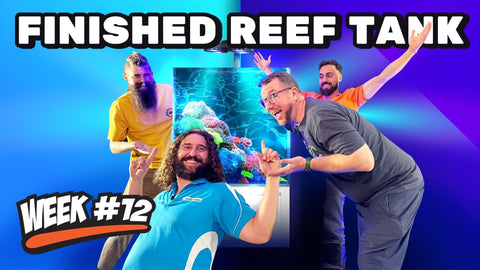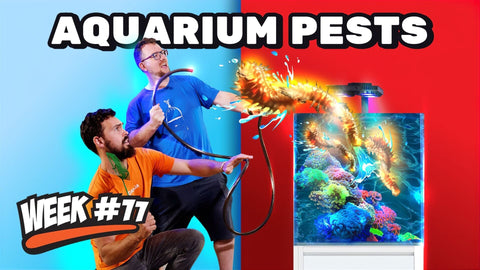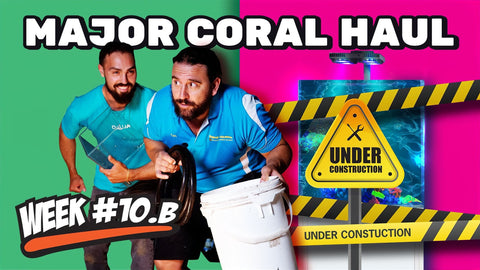Best Parameters To Maintain In A Saltwater Aquarium | 12 Week Reef Video Tutorial #4
Starting a Reef Tank: Wet Your Tank, Salinity, and Key Parameters
When starting a reef tank, understanding how to properly introduce saltwater, manage salinity, and maintain the best water parameters is crucial. Week 4 is all about setting up your saltwater aquarium and getting it ready for livestock by adding water and testing key parameters. Here’s how to make sure you’re setting up your reef tank for success.
Choosing the Right Water: Natural Seawater vs. Artificial Seawater
When planning a reef tank, you have two main options for water: natural seawater and artificial seawater. Natural seawater comes straight from the ocean, delivered by reputable suppliers, while artificial seawater is made by mixing pre-made salt with reverse osmosis deionized (RODI) water.
Natural seawater offers a balanced mix of minerals, trace elements, and beneficial microorganisms that are naturally found in the ocean, making it a popular and cost-effective option. However, it’s important to ensure that this seawater is sourced from clean, open ocean areas and not from bays or harbors. Poorly collected seawater can lead to issues such as nutrient imbalances and bacterial contamination.
On the other hand, artificial seawater gives you more control over your tank's parameters. By using RODI water and pre-made salt mixes, you can maintain consistent salinity and control other important water levels. The choice between natural and artificial seawater will depend on availability, cost, and your desired level of control over your reef tank.
Preparing Your Tank: Testing Salinity and Key Parameters
Before you can add water to your reef tank, it's essential to test the water’s salinity and temperature to ensure it matches the best conditions for your corals and fish. This can be done using a refractometer or a salinity pen. Both methods are effective, but salinity pens are often more convenient for quick, accurate readings.
For the ideal environment, maintain salinity levels at around 35 ppt (1.026sg). If your salinity is off, you can easily adjust it by adding artificial salt or diluting with RODI water.
Next, there are three crucial elements to test: calcium, alkalinity, and magnesium. These are essential for your corals' growth and overall tank health.
- Calcium: Corals need calcium to build and strengthen their skeletons. The target level for calcium is between 400-450 ppm.
- Alkalinity: Also known as carbonate hardness, this helps to buffer the water and stabilize pH levels. Aim for alkalinity in the range of 8-8.5 dKH.
- Magnesium: Magnesium stabilizes both calcium and alkalinity levels, preventing premature solidification of calcium carbonate, which corals need to grow. The target range for magnesium is 1250-1350 ppm.
Testing and adjusting these parameters is vital for maintaining a healthy reef tank. You should also regularly check pH (which should fall between 8.2-8.4) and temperature (22-25°C or 71-75°F), as these factors play a role in the overall stability of your aquarium.
Managing Evaporation and Using an ATO
As your saltwater aquarium runs, water will evaporate over time, leaving behind salts and other elements, which can throw off your salinity levels. To combat this, you can use an ATO (auto top-off unit). These devices refill evaporated water automatically using RODI water, which helps maintain the right water volume without affecting the tank's salinity.
An ATO is a critical piece of equipment that makes maintaining your reef tank much easier by consistently topping off with pure RODI water. Many modern reef tanks come with built-in ATOs, either as gravity-fed or pump-powered units.
RODI Water: The Secret to Stable Parameters
Using RODI water is crucial for keeping your tank’s parameters stable. RODI units filter tap water through four stages to remove impurities, providing pure water free of salts, minerals, and contaminants. This water is ideal for maintaining your reef tank, as it prevents the introduction of harmful elements into your system.
Saltwater Aquarium Best Start Guide
In the coming weeks, we’ll dive into topics like:
- Choosing your first marine fish
- Cycle your reef tank fastest way
- Best LED lighting for your reef tank
- Maintaining your reef tank





